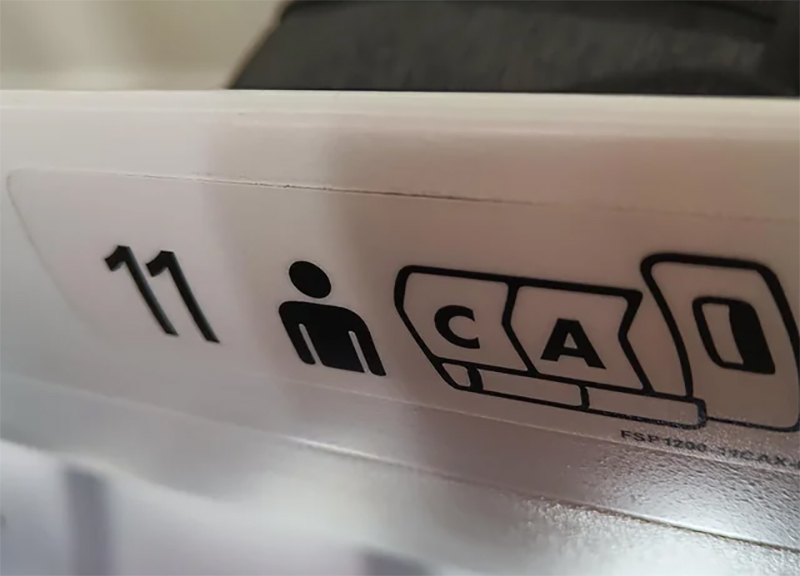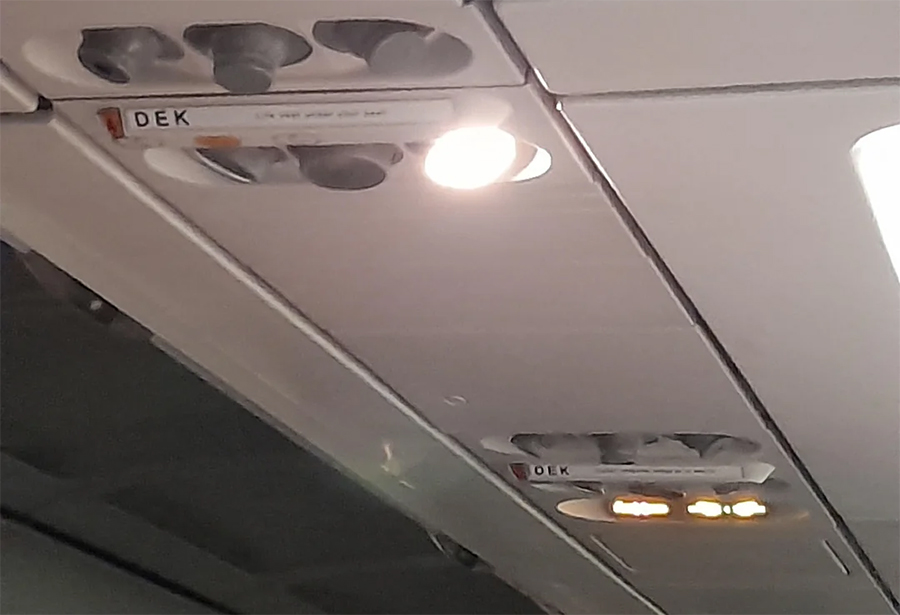Airplane seat lettering follows certain principles based on International Civil Aviation Organization (ICAO) regulations and individual airline practices. Omitting some letters creates consistency across different aircraft configurations within a fleet.
 |
The letter "B" is omitted on narrow-body aircraft. Photo: Reddit |
The letter "B" is omitted on narrow-body aircraft. Photo: Reddit
On narrow-body aircraft (single-aisle), with three seats on each side, the left side (port side) is labeled A to C, and the right side (starboard side) from D to F. This means window seats are A and F, while aisle seats are C and D. On smaller planes with two seats on each side, letters B and E are omitted while still adhering to this principle.
Wide-body aircraft, with two aisles, maintain consistent lettering for aisle and window seats. In a 3-4-3 configuration (three rows of seats with 3, 4, and 3 seats respectively), the letters would theoretically be ABC - DEFG - HIJ. However, to avoid confusion between "I" and "1," many airlines use HJK. A and K remain the window seats, and C, D, G, and H are aisle seats.
With A and K consistently representing window seats, many airlines apply this to smaller aircraft, using AC and DK. B and E are skipped to ensure C and D remain aisle seats. This pattern continues on narrower twin-aisle planes like the Airbus A330, which uses AC - DEFG - JK.
Similar to "I," some airlines also skip "J." "H" is often avoided due to potential confusion with "1" or "9" in certain fonts, especially on handwritten boarding passes or with low-quality printers. Such errors can slow down boarding or cause other issues.
 |
"D" always denotes an aisle seat, while "K" signifies a window seat. Photo: Quora |
"D" always denotes an aisle seat, while "K" signifies a window seat. Photo: Quora
When checking in, passengers can remember this seat selection principle: A and K are always window seats, C and D always aisle seats regardless of aircraft type. (C and G are right-side aisle seats; D and J are left-side aisle seats on wide-body aircraft.) B and E are always middle seats.
The reason for standardized lettering is simple: it allows crew (and passengers) to instantly identify seat types by their number without memorizing different labeling systems.
Tam Anh (via SeatGuru, Quora, Reddit)












